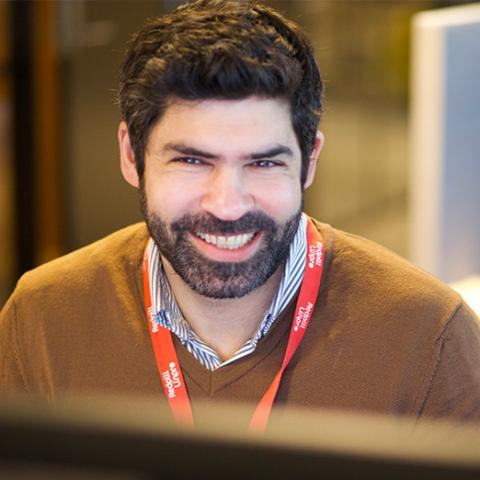
Flexibility
Instead of strictly adhering to role descriptions, allow your team members to explore and develop their strengths. Let them take on different responsibilities and roles based on the project's needs and their own competencies. This provides an opportunity for growth and engagement in their work.
This applies equally to the named roles in SAFe, such as Product Owner (PO), Scrum Master (ScM), Business Owner (BO), System Architect (SA), Program Manager (PM), and others. Specifically, a Scrum Master can, for example, collaborate with a Product Owner in prioritizing items in the product backlog.
Before a PI (Program Increment) planning, it can also be beneficial to have a discussion and prepare the work together. Set aside time for the team to discuss everything that's going on with BO, SA, PO, and PM. Do this in an early stage when all features may not be fully defined yet. This way, the entire team can become more involved and have a greater chance to participate and influence from the beginning.
Some SAFe purists might not agree with this idea and argue that it takes valuable time away from roles that are not directly part of the team, but why not give it a try?
This approach also helps break down silos and promotes cross-functional collaborations, allowing you to focus on what needs to be delivered rather than getting stuck on who should do what. Schedule a working session where you invite PM, SA, and BO to collaborate, creating the necessary stories to fulfill the acceptance criteria specified in the program backlog. Don't expect PM, SA, and BO to be available at all times as they have other commitments, but if you can find a suitable occasion, it's better than nothing at all.
So, it's not just about being flexible with the roles in SAFe; it's also about adapting the ceremonies to get the most out of them. Always ask yourself why you are doing something or why you organize a particular ceremony, and if you can't find the purpose behind it, then perhaps it's better not to hold it.
Sharing experiences
Another way to bring the various roles closer together is by creating forums to share experiences. However, this doesn't only apply to roles within the team but also with other teams. An easy way to achieve this is by first exploring the areas of interest among the teams. This can range from technical presentations on new tools and technologies to exchanging experiences about working methods, agile practices, and project challenges.
Sometimes it's good to structure these meetings with an agreed agenda in advance. Other times, a more open discussion forum might be better, depending on the situation and the spontaneity of the participants. Use your judgment and decide what works best for your organization.
Many teams may feel that they don't have much in common with other teams, but the fact is that there are ALWAYS things of mutual interest. Even if teams work with different technologies and perhaps have slightly different ways of working, there are common aspects like knowledge sharing, sprint planning, career paths, and much more.
One thing to consider in knowledge exchange is also listening to the experiences of the management team from their perspective. For example, BO can share insights from business discussions, creating an understanding in the team of why different things are prioritized differently and where the needs come from, perhaps touching on future visionary plans for the product.

Focus on what needs to be delivered
As we mentioned before, it's essential not to get too fixated on what various roles are expected to do or what responsibilities lie with whom. We're not saying that you should completely ignore this aspect. It's always good to have a basic description for a role and understand its purpose. SAFe provides excellent descriptions for most relevant roles, and, of course, you should start from there.
However, don't strictly adhere to these descriptions; instead, adapt the roles to your unique situation and avoid cementing and rigidifying them. Choose to focus on what the team needs to deliver, and let the roles naturally adjust to these deliveries to make the process as efficient as possible, with customer value and results always at the forefront.
Celebrate progress
At first glance, it might seem a bit artificial and forced, but the fact is that it quickly becomes a natural part of the work – rewards and celebrating progress. It can be as simple as applauding a success or a presentation, but it can also involve more organized activities like going out for a meal together to celebrate a milestone or something similar.
Another fun thing you can do is award various prizes within the team, like "Best Effort," "Best Team Player," "Most Helpful Colleague," and so on. Make it light-hearted and hand out fun prizes; it doesn't have to be anything spectacular, simple items like a tablet case or a printed certificate will do. Be forgiving if it feels a bit silly at the beginning.
Make it a fun thing!
By creating a work environment that prioritizes delivery and results over being confined by strict role descriptions, your organization can achieve a more dynamic and efficient workplace. By encouraging collaboration, flexibility, and a results-focused culture, you can avoid pitfalls that arise when one gets stuck on "how things should be done" rather than "what needs to be done."
This way, your organization can optimize the use of the SAFe framework and achieve its goals more effectively.
Now that we have talked a bit about flexibility in both roles and ceremonies, we will delve into how you can focus more on the outcomes of the different ceremonies rather than wasting unnecessary time on discussions that may not propel the team forward. More about this in the next article.



